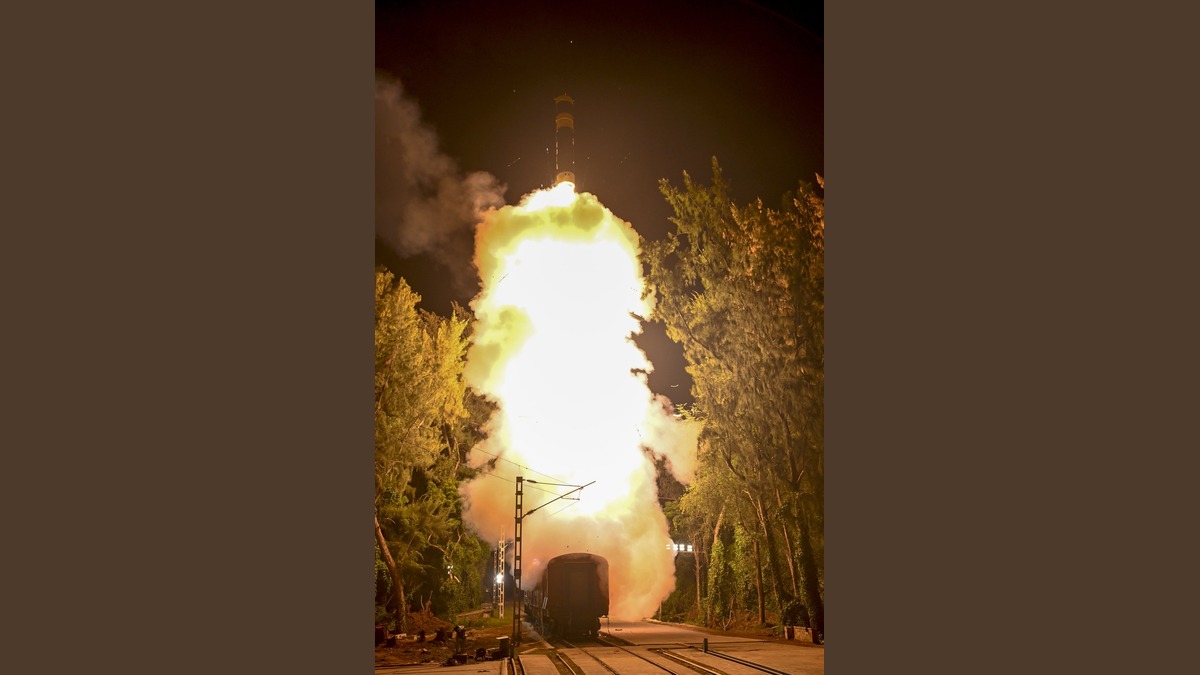Defence Minister Rajnath Singh on Thursday announced the successful launch of India’s Intermediate Range Agni-Prime Missile from a rail-based mobile launcher system, marking a significant milestone in the country’s strategic capabilities.
“India has carried out the successful launch of the Intermediate Range Agni-Prime Missile from a rail-based mobile launcher system. This next-generation missile is designed to cover a range up to 2,000 km and is equipped with advanced features,” Singh posted on X.
The Defence Minister highlighted that the successful flight test places India among a select group of nations capable of deploying a canisterised missile system from a moving rail network. “Congratulations to DRDO, Strategic Forces Command (SFC), and the Armed Forces on the successful test of the Agni-Prime missile,” he said.
Singh noted that the rail-based launch system allows cross-country mobility, short reaction times, and reduced visibility for the missile, enhancing India’s strategic deterrence. “This first-of-its-kind launch demonstrates the capability to move on the rail network without pre-conditions, giving the user operational flexibility,” he added.
Earlier this week, Rajnath Singh also underscored India’s vision of Aatmanirbhar Bharat, emphasizing that self-reliance is not just about domestic manufacturing but about becoming a credible global source of advanced technology. He inaugurated Tata Advanced Systems Limited’s (TASL) state-of-the-art defence manufacturing facility in Berrechid, Morocco, alongside Moroccan Defence Minister Abdelatif Loudyi.
The 20,000-square-metre facility will produce the indigenously developed Wheeled Armoured Platform (WhAP) 8×8, jointly designed by TASL and India’s Defence Research and Development Organisation (DRDO). Singh described the initiative as a reflection of India’s commitment to strategic autonomy while maintaining global partnerships.
“Self-reliance does not mean isolation. We aim to develop capabilities that allow us to independently protect our nation while engaging with global partners,” Singh said.





